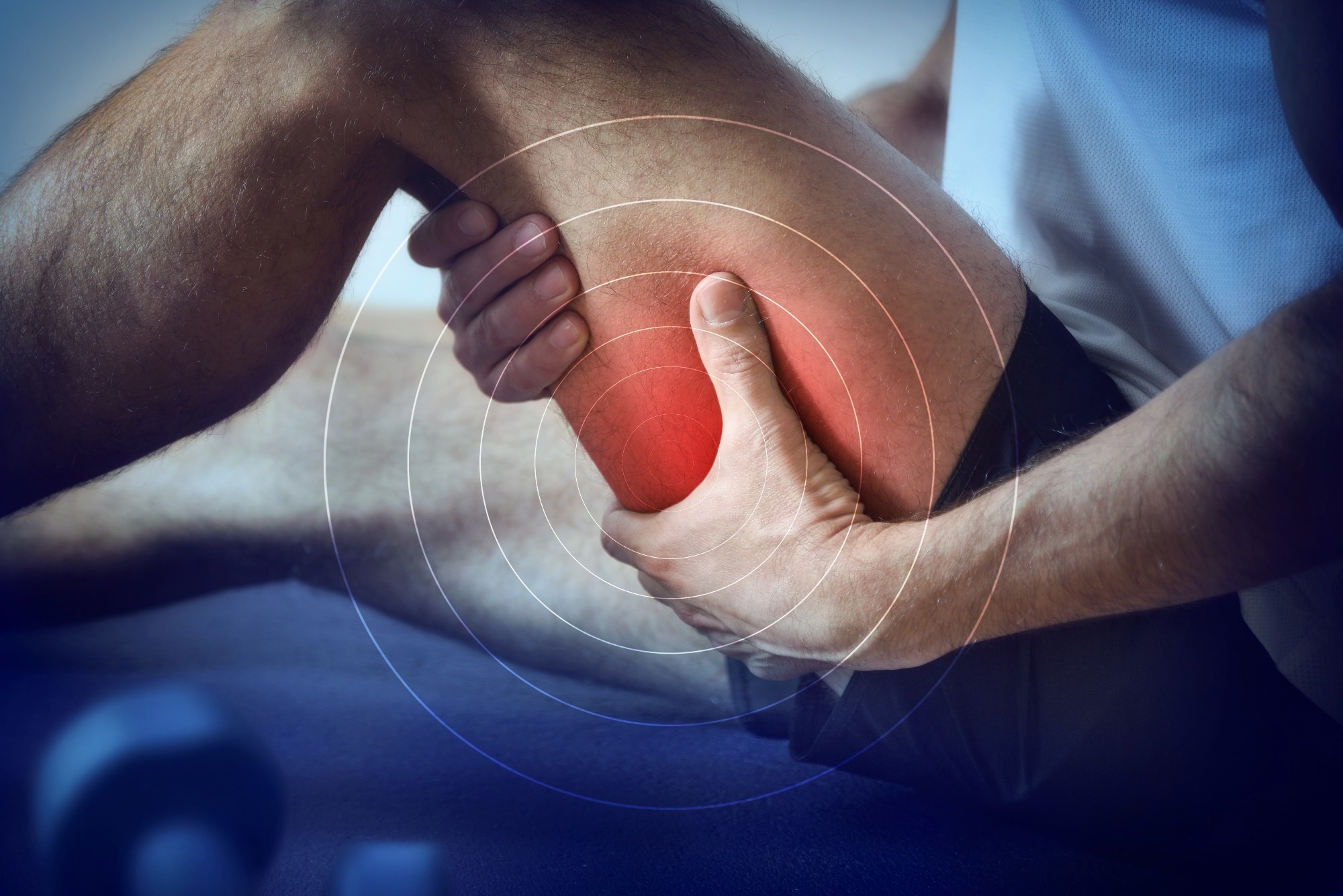In a recent study published in Nature Communications, researchers investigate the pathophysiology of post-exertional malaise (PEM) in long coronavirus disease 2019 (COVID-19) patients, focusing on skeletal muscle changes, exercise capacity, metabolic disturbances, and tissue alterations.
 Study: Muscle abnormalities worsen after post-exertional malaise in long COVID. Image Credit: Davizro Photography / Shutterstock.com
Study: Muscle abnormalities worsen after post-exertional malaise in long COVID. Image Credit: Davizro Photography / Shutterstock.com
Background
The chronic aftereffects of acute infections, such as post-acute sequelae of COVID-19 (PASC) or long COVID, significantly impact millions globally. These conditions are associated with a wide range of symptoms, including reduced exercise tolerance and PEM.
Theories for these symptoms in long COVID range from mitochondrial dysfunction, amyloid deposit accumulation, and systemic inflammation. Nevertheless, further research is needed to fully understand the complex pathophysiology of long COVID and develop effective treatments for its diverse and debilitating symptoms.
About the study
The present study was conducted at the Amsterdam University Medical Centers (UMC) and Faculty of Behavioral and Movement Sciences from Vrije Universiteit Amsterdam. Participants included long COVID patients and healthy controls, with the former diagnosed based on specific criteria, including PEM.
Participants with pre-existing conditions that could influence the results were excluded from the study. The study protocol was reviewed and approved by relevant medical ethics committees using the Helsinki guidelines.
The research methodology included four visits in two weeks, during which participants were subjected to a maximal incremental ramp exercise test to induce PEM. Skeletal muscle biopsies were obtained before and after the exercise, in addition to venous blood samples obtained at each visit. Near-infrared spectroscopy (NIRS) was used to evaluate the extent of oxygenation and saturation within muscles, with participants wearing an accelerometer for measuring physical activity levels on a daily basis during this period.
Skeletal muscle mitochondrial function was assessed using permeabilized fiber respirometry. Immunohistochemistry was also used to evaluate muscle fiber morphology, the presence of amyloid-containing deposits, and signs of pathology.
Fiber-type composition and size were investigated using immunofluorescence staining. Staining for succinate dehydrogenase (SDH) activity and capillarization assessment using Ulex Europaeus Agglutinin 1 lectin (UEA-1) was also utilized. Muscle biopsies were also stained to determine the presence of the severe acute respiratory syndrome coronavirus 2 (SARS-CoV-2) in muscle cells.
Metabolomics analysis for key polar metabolites was performed on skeletal muscle biopsies and venous blood samples. This was complemented by measurements of hormone concentrations and mitochondrial deoxyribonucleic acid (mtDNA) in venous blood samples.
Study findings
Significantly reduced exercise capacity was observed in long COVID patients that was not associated with the cardiovascular system but poorer ventilatory function during exercise and peripheral skeletal muscle impairments. These patients had a lower maximal oxygen pulse, gas exchange threshold, and peripheral oxygen extraction, indicative of skeletal muscle issues. There was no evidence of submaximal effort affecting these results, as the proportion of participants reaching a plateau in oxygen uptake was similar across groups.
The progression of PEM among long COVID patients who exhibited higher muscle pain, tiredness, and cognitive symptoms after maximal exercise was also assessed. Notably, this condition developed despite the different exercise capacities of each study participant.
Metabolic and mitochondrial dysfunctions were explored to determine their possible involvement in this condition. To this end, these dysfunctions were found to be related to the pathophysiology of PEM.
Amyloid-containing deposits were present in higher concentrations in long COVID patients but were not located in capillaries or lymphatic vessels, thus negating the potential role of vessel blockage causing tissue hypoxia. The mechanism responsible for the increased intramuscular accumulation of these deposits after post-exertional malaise remains unclear.
A greater percentage of long COVID patients exhibited small atrophic fibers and focal necrosis in skeletal muscle that intensified after exercise, thus indicating exacerbated tissue damage. Despite this, signs of skeletal muscle regeneration were more evident in long COVID patients, even before inducing PEM, which suggests that exercise-induced muscle damage and regeneration are closely associated with the pathophysiology of PEM.
Metabolic and mitochondrial dysfunction worsened in long COVID patients with PEM, as indicated by lower oxidative phosphorylation capacity and reduced SDH activity. Higher levels of glycolysis-related metabolites and lower abundance of metabolites related to purine synthesis and the tricarboxylic acid cycle were also observed, thus indicating a lower reliance on oxidative metabolism in these patients.
Journal reference:
- Appelman, B., Charlton, B. T., Goulding, R. P. et al. (2024). Muscle abnormalities worsen after post-exertional malaise in long COVID. Nature Communications. doi:10.1038/s41467-023-44432-3